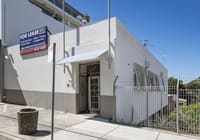
Brisbane's shopping centres get serious about foot traffic
Shopping centres across Queensland’s southeast are responding to competition from e-commerce by undertaking major refurbishments, changing their tenancy mixes and embracing “omni-channel retailing” where stores use a combination of websites and bricks-and-mortar outlets to move stock.
While online spending continues to be a small percentage of the Australian retail market, it is tipped to grow, according to CBRE.
And that means that traditional retailers are having to find new ways to grow sales to stay ahead of the pack.
According to CBRE’s Australia’s Omni-Channel Revolution report, online spending currently accounts for about 9 per cent of all retail trade, but that figure is expected to rise to 12 per cent by 2022, or an annual volume of about $43.1 billion.
By contrast, traditional bricks-and-mortar retail will grow at a much slower rate of about 3.2 per cent, according to the report.
Total sales from bricks-and-mortar stores are currently $308 billion in Australia, according to Euromonitor.
“Despite growth in online shopping, sales volumes in bricks-and-mortar stores over recent years have increased,” the report says.
“According to a 2015 report from DHL, shoppers that are engaged with omni-channel technology spend up to 30 per cent more than traditional shoppers – an incentive for retailers to invest in omni-channel technology. The traditional retail store is not becoming obsolete, but its purpose is transforming.”
CBRE senior research analyst Yvette Burton said e-commerce was an opportunity for retailers to reimagine their centres, with a number of multimillion-dollar refurbishments either completed or under way in the state’s southeast.
The average value of these revamps has grown significantly over the past two years as more landlords opt to make over their centres and reposition their tenancy mixes, Ms Burton said.
“E-commerce is quickly being recognised as an opportunity for retailers, not a threat, and has given retailers the opportunity to obtain a much greater reach to their consumers and to provide a higher level of service,” she said.
“Tenancy optimisation continues to be a prime focus for landlords with a shift towards lifestyle and entertainment.”
She said that many of the refurbishments were including a higher percentage of speciality and food and beverage tenancies, which typically attracted higher rental rates per square metre.
According to JLL, eight of the 10 regional centres in southeast Queensland have undergone major refurbishments and extensions in the past five years.
JLL Queensland senior analyst Tom Broderick said shopping centre owners had been improving and expanding their food and beverage offerings, which could lead to higher rents as well as the centre becoming a destination in its own right.
He said examples included the 8 Street Asian experience at Westfield Garden City and The Kitchens at Robina Town Centre.
“Another strategy is for increased entertainment options,” Mr Broderick said.
“In the past, cinemas have been the major entertainment option at shopping centres, however, landlords are looking to expand on this.
“The current redevelopment of Sunshine Plaza on the Sunshine Coast is a good example, with the proposal of Australia’s largest high ropes course to be located in the centre.”
The $400 million Sunshine Plaza redevelopment, which is currently under way, will see the centre expand from 73,000 square metres to more than 107,000 square metres, making it the largest retail centre north of Brisbane.
The redevelopment will feature an “enhanced retail mix” and more than 100 new specialty stores.
Mirvac Retail portfolio analysis and strategy national manager Dan Steur said it was important retailers did not consider e-commerce as an ”us versus them scenario”.
“There is a lot of research that shows that in catchments where there is a physical store presence, the online store benefits from each sale as well.”
Mirvac Retail is providing more than just food and entertainment across its three Brisbane assets, he said.
“At Orion (Springfield Central), it’s a town square concept, so it’s not purely about retail. There are gyms, we’re introducing a new library, a yoga studio – the design is set up as such that it seamlessly integrates with the surrounds.
“We’re introducing an off-lead dog park there as well. So we’re using our shopping centre not just for shopping but for lifestyle uses as well.”
Partnerships are a win-win
One of the ways Mirvac is including online elements into its shopping centres is through a partnership with food delivery company foodora.
It has been rolled out in Brisbane’s Orion Springfield Central, with Mirvac Retail’s two other assets at Toombul and Kawana likely to follow suit.
Mirvac Retail’s Dan Steur said the partnership was another avenue for food operators in the centre to drive additional sales.
“They’ve already got a lot of fixed costs in operating a physical store, foodora offers them an opportunity to expand their customer base and the way that customers use their product as well,” he said.
“We’re principally an intermediary between the retailers and foodora. We offer foodora the opportunity to have immediate scale through our retail base and from a retailer’s perspective…they’re able to leverage off our marketing channel as well to promote that.”
Steur said Mirvac Retail was currently working on creating a more seamless pick-up process for foodora at Orion Springfield Central.
Foodora’s Lizzie Kay says the deal will enable restaurants to take advantage of additional revenue streams as well as to help coordinate their front-of-house and in-kitchen activities.
“In addition, the foodora pick-up function can help vendors during peak periods, making it the perfect product for restaurants housed in a food court space,” she said.












